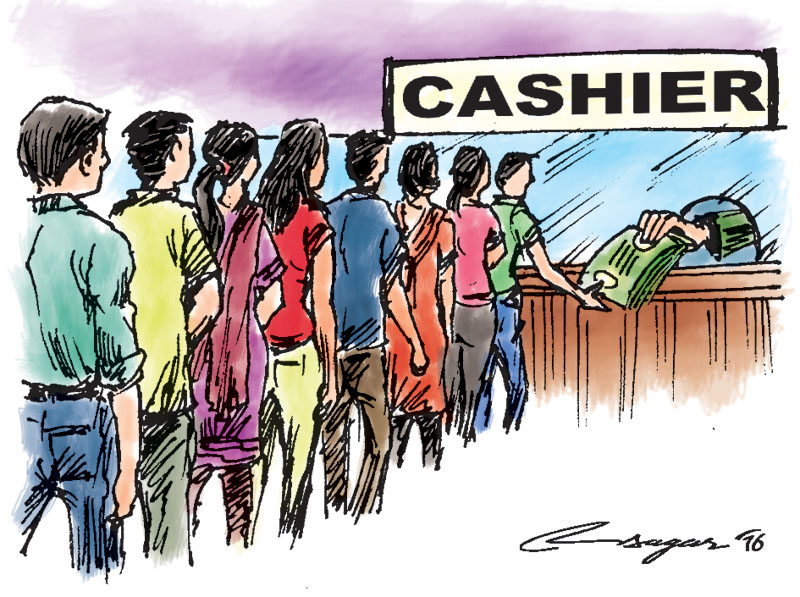Enhancing financial access: Inclusive and sustainable growth
Understanding the foregoing challenges and undertaking pragmatic measures for enhancing financial access would empower individuals, especially the poor, permitting them to better participate in the economy
Two billion people--38 percent of adults in the world--do not use formal financial services, and 73 percent of poor people are unbanked because of costs, travel distances and the often-burdensome requirements involved in opening a financial account.
Most formal financial institutions deny the poor their services because of perceived high risks, the high costs involved in small transactions, and the poor people’s inability to provide marketable collateral for loans.
In view of this, promotion of financial access has become a common developmental theme for most developing countries and has become the key to inclusive and sustainable growth.
Providing the poor with improved facilities to save and to have better access to credit and insurance helps them manage risk, build assets, increase income, and enjoy a better life.
Though financial services cannot solve all the problems caused by poverty, they assist in putting resources and power into the hands of poor and low-income people so that they can draw their own paths to exit from poverty.
According to World Bank’s Global Findex Database 2014, 33.8 percent of the adults (age of 15+) have bank accounts in Nepal, 6.7 percent have debit card, and ATM is the principal mode of withdrawal for 13.9 percent of the adults.
Likewise, 16.4 percent of the adults saved at a financial institution while 11.9 percent borrowed from a financial institution.
Moreover, based on World Economic Forum’s Global Competitiveness Report 2015-16, out of 140 economies, Nepal is ranked at 82nd position in terms of availability of financial services and 72nd position with respect to affordability of financial services.
In Nepal, there has been an expansion in branch network of banks and financial institutions (BFIs) in recent years that has widened financial access.
The number of branches aggregated 4023 in mid-January 2016 compared to 3,625 a year ago.
Likewise, the number of deposit accounts and the number of ATM/debit cards issued increased to 15.9 million and 4.4 million respectively in mid-January 2016 from 14 million and 4.1 million in mid-January 2015.
To ensure reliable and affordable financial services to the poor people in the country, Nepal Rastra Bank had formulated a number of policy measures including a) flexible licensing policy for setting up microfinance institutions (MFIs), b) gradual increment in deprived sector lending requirement, c) special refinance facility to cottage and small industries, d) interest free loan to extend bank branches in remote and rural areas, e) establishment of Rural Self Reliance Fund for subsidized credit to the poor, and f) directives on branchless banking and mobile banking services.
Similarly, the drafts of the Financial Sector Development Strategy and Financial Literacy Policy have been submitted to the Ministry of Finance.
Despite the measures undertaken and the rise in number of BFIs and their branches, the progress on the financial access front has been quite dismal as the financial institutions are still primarily scattered around the urban and semi-urban areas where geographical access is fairly simple. Consequently, a large number of rural households in the country still lack basic access to finance.
A host of factors are responsible for this. First of all, inadequate infrastructure, difficult geographical terrain, scattered settlement and undeveloped markets have been major impediments for the BFIs to branch out in rural and remote areas.
On the other hand, BFIs have been slow in adopting new technologies that may be available to help overcome daunting geographical logistical challenges that exist in many parts of the country.
Moreover, unlike many developing countries where mobile banking and agent banking are transforming the financial access landscape, this is not happening in Nepal to the degree desired.
Other factors include higher interest rates, lack of trust on financial institutions, lack of eligible collateral, and cumbersome process for even a small loan.
The level of financial literacy is poor in the rural areas where the people are unaware of banking facilities and how to access them.
A number of challenges exist for promoting financial access. In the first place, improving transparency of rural financial institutions including MFIs, capacity building of staff of rural financial institutions, and timely investment on innovative products such as branchless banking and mobile banking for rural areas, would yield better outcome on the financial access front.
Secondly, a promising avenue for expanding financial access among the unbanked is to digitize payments by moving cash payments into accounts.
Thirdly, it should be realized that access does not always lead to usage. Many studies and usage analysis show that after opening bank accounts, hardly any transactions have taken place in such accounts.
BFIs must genuinely strive to provide the directed services to the rural population, since they are the main pillars for the desired success.
Overall, understanding the foregoing challenges and undertaking pragmatic measures for enhancing financial access would empower individuals, especially the poor, permitting them to better participate in the economy, actively engage in their own development and protect themselves against economic shocks.
Dr. Pant is Director at Nepal Rastra Bank.






